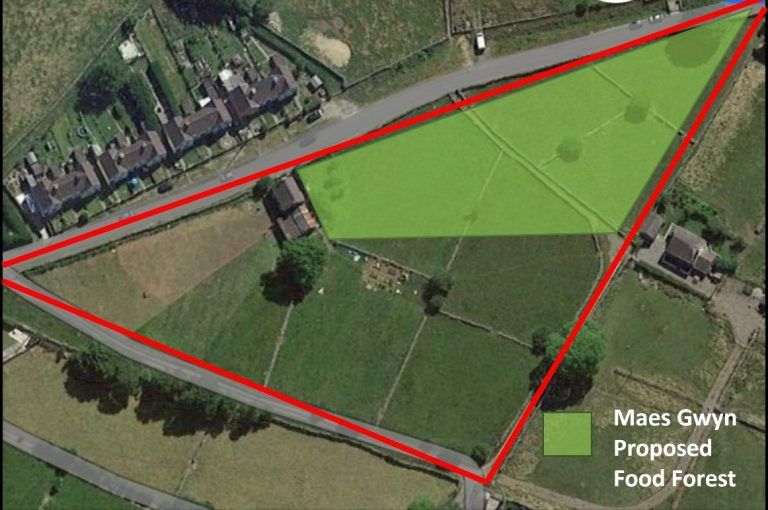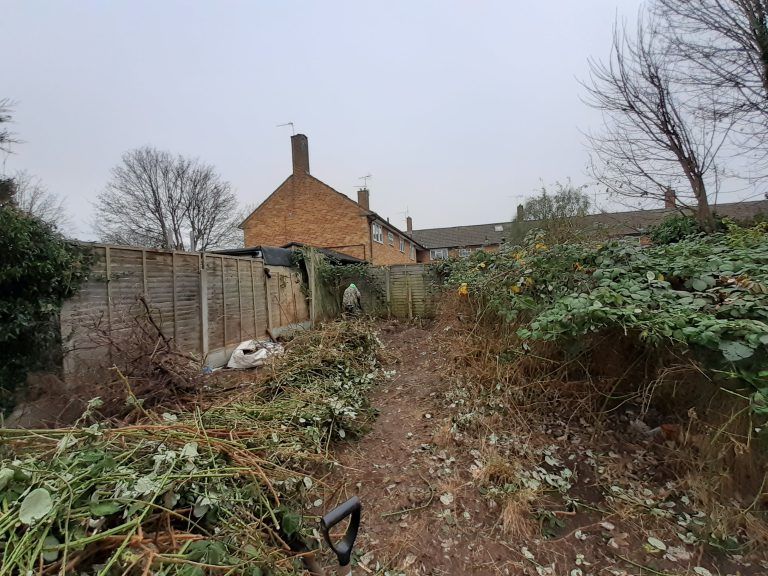The strawberry tree is a beautiful small evergreen tree or shrub that can occasionally reach 9m tall and 8m wide, though it is usually rather smaller. There are several named forms and some of these are no more than 2–3m tall. The plant produces beautiful lily-of-the-valley type flowers in late autumn and is particularly eye-catching at this time since it is also ripening the fruit from the previous year’s flowering.
A very easily grown and trouble-free plant, it does best in a nutrient-rich well-drained moisture-retentive soil in sun or semi-shade. It also grows well in heavy clay soils and in dry soils. Most species in this genus require a lime-free soil but this species is fairly lime tolerant. Especially when young, it prefers a fairly sheltered position and dislikes cold drying winds. It is, however, surprisingly tolerant of strong winds if they are not from cold quarters and can succeed in fairly exposed positions near the coast. This is a very good tree to grow in towns because it tolerates industrial pollution.
The plant is hardy in most temperate zones and has withstood temperatures down to at least -16°c without injury when grown in suitable conditions, though young plants would usually be killed at temperatures as low as this. Because they resent root disturbance, it is best to plant them out into their final positions as soon as possible. It is probably, therefore, a good idea to give them some protection from the cold for their first winter or two outdoors if the weather is very cold.
The strawberry tree produces masses of beautiful white flowers in winter. Since the fruit takes 12 months to ripen, the tree carries both mature fruit and flowers at the same time and is then incredibly beautiful. This is a superb plant to grow as a specimen in a lawn, and it also grows very well on the sunny edges of a woodland garden.
We have received a number of queries about this tree, usually asking if the fruit is edible. The answer is yes, though this does need to be qualified. The fruit varies considerably in size, though it averages about 15–20mm in diameter. It is a lovely red colour and, from a distance, does look a little like strawberries – hence the common name of the plant. The resemblance to strawberries, however, does not apply to the taste. The books say that it is sweet but insipid, and the Latin name ‘unedo’ means ‘I eat one (only)’ and suggests that the fruit is not very palatable. Whilst it does have a somewhat gritty skin, when fully ripe the fruit itself has the texture of a lush tropical fruit and has a delicate pleasant flavour. For those people with sensitive taste buds, this is a fruit that can be enjoyed when eaten in moderate quantities. The fruit can also be cooked and is used to make delicious and nourishing jams and preserves.
Ripening over a period of several weeks in late autumn and early winter, the fruit is well-mannered enough to fall from the tree when it is fully ripe. It is a good idea to make sure that the fruit has a soft surface to fall on so that it is not damaged by the fall. Short grass is very good for this. If you do not want to wait for the fruit to fall, it can be picked when it is deep red in colour and very soft to the touch. It needs to be eaten within 24 hours or it will start to decay. You can also pick the fruit when it is fully coloured but still very firm, and will then store for a few days.
The plant is widely available from many nurseries and garden centres. It is also fairly easy to propagate. The best way is from seed – this is sown on the surface of a compost in a greenhouse as soon as it is ripe. If you are unable to obtain the ripe seed, then stored seed should be soaked for 5–6 days in warm water before being sown in late winter. Do not allow the compost to become dry. The seed usually germinates well in the middle to late spring. The seedlings are rather small and slow-growing, they are also prone to damp off and so must be kept well-ventilated, preferably in a lightly shaded position. Transplant then into individual pots as soon as they are large enough to handle and grow them on in light shade in a greenhouse for at least their first winter. Plant them out into their permanent positions when they are 20–30cm tall, the best time for this is in late spring or early summer after the last expected frosts.
It is also possible to propagate from cuttings, and this is the only way of propagating the named varieties. You use mature wood about 15–20cm long of the current season’s growth, with a heel. Take them in winter and plant them in a frame, preferably with bottom heat. They are a bit slow to root and you often get a poor percentage take. To improve this, try soaking some chopped willow twigs in cold water for 24 hours and then watering the cuttings with this water. The willow bark contains root-promoting hormones and will encourage root formation in the cuttings.
If there are some branches low enough, it is possible to produce new plants by layering. You make a small incision with a knife into the base of the young wood on the branch and then peg this into the ground. It can take up to 2 years, but this branch will usually produce roots and can be separated from the parent plant when it is growing away successfully.
There are a number of named varieties that have been developed for their ornamental value and these are usually much smaller than the species and therefore of special value where space is at a premium. ‘Compacta’ is a dwarf shrub growing perhaps 2m tall eventually. It seems that there is more than one form of this cultivar. The form that is currently available fruits very freely, even when less than 1m tall, though older forms were said to fruit very poorly. ‘Croomei’ is a form with red-tinged flowers that grows perhaps 4 metres tall and wide. It is said to be a very reliable fruiting form. ‘Elfin King’ produces very good sized fruits up to 25mm (1”) in diameter which have a sweet flavour. This is a slow-growing compact plant, often no more than 1 metre tall. It comes into bearing early, sets fruit freely and is ideal for container growing. ‘Rubra’ is a slow growing form with lovely red-tinged flowers. It can eventually reach 4 metres or more tall and wide. At only one metre tall it can be absolutely laden down with fruits and flowers.
Strawberry Tree Arbutus unedo
Family: Ericaceae
Known Hazards: None known
Natural Habitats: Woodland, scrub and rocky hillsides, often on limestone and sandstone.
Natural Range: S. Europe and S.W. Ireland.
Hardiness Zones: USDA 8–10. PFAF: 7. Not frost tender
Type & Size: Medium sized evergreen tree growing to 9m (30ft) by 8m (25ft)
Growth: Slow
Soil: light (sandy), medium (loamy) soils, and heavy (clay) soil. It prefers well-drained, dry or moist soil.
Soil pH: acid, neutral and basic (alkaline) soils.
Light: semi-shade (light woodland) or no shade.
References: 1, 2, 3, 4, 5, 7, 11, 17, 45, 46, 49, 59, 61, 78, 89, 134, 148, 166, 182, 183, 200, 245, 254, 268, 304, K
Edible Rating 4
Medicinal Rating 2
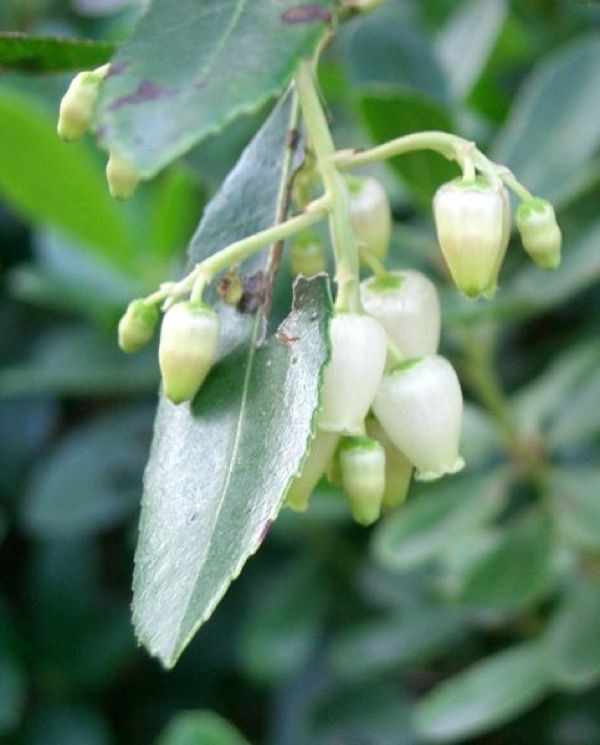
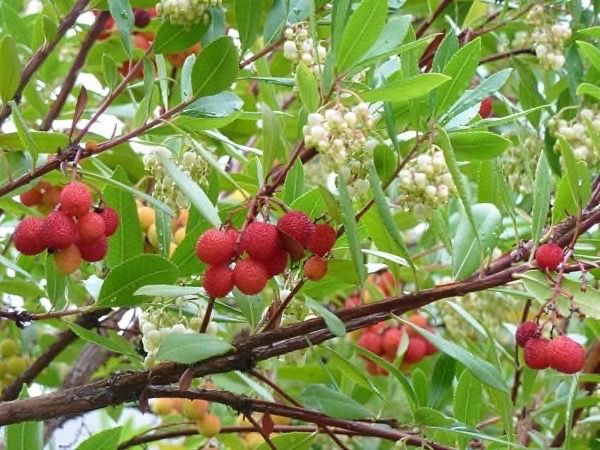
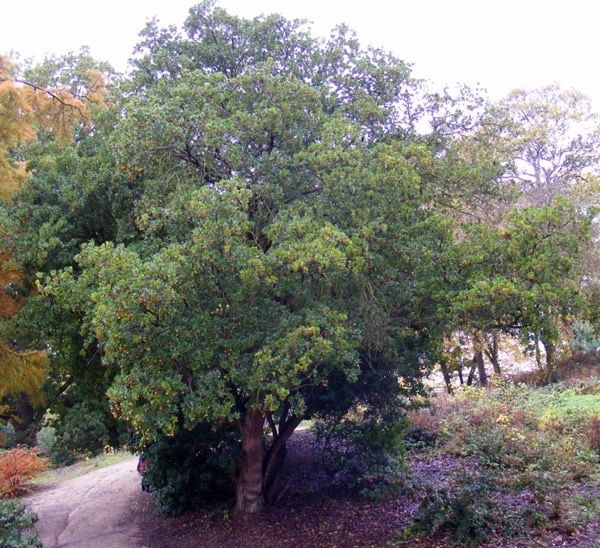
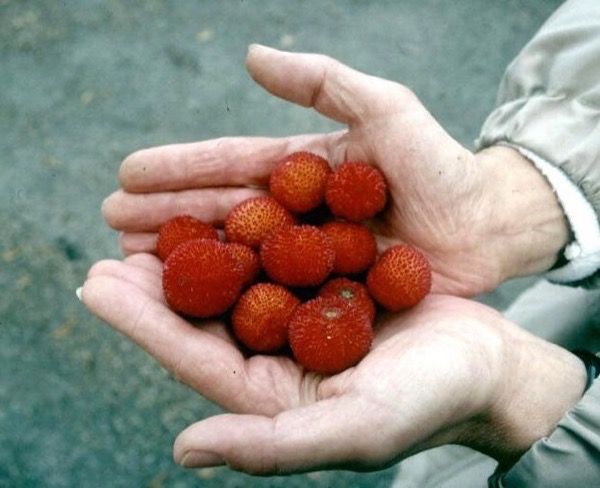
Database Page http://www.pfaf.org/User/Plant.aspx?LatinName=Arbutus+unedo






